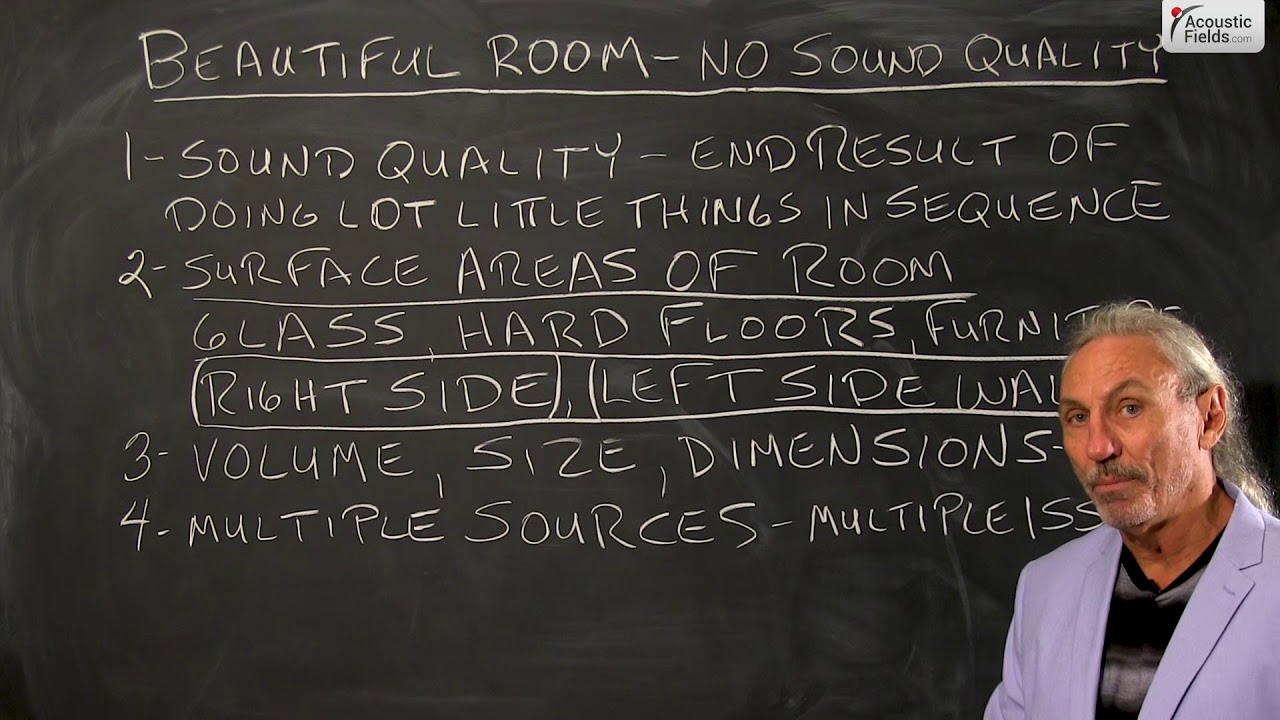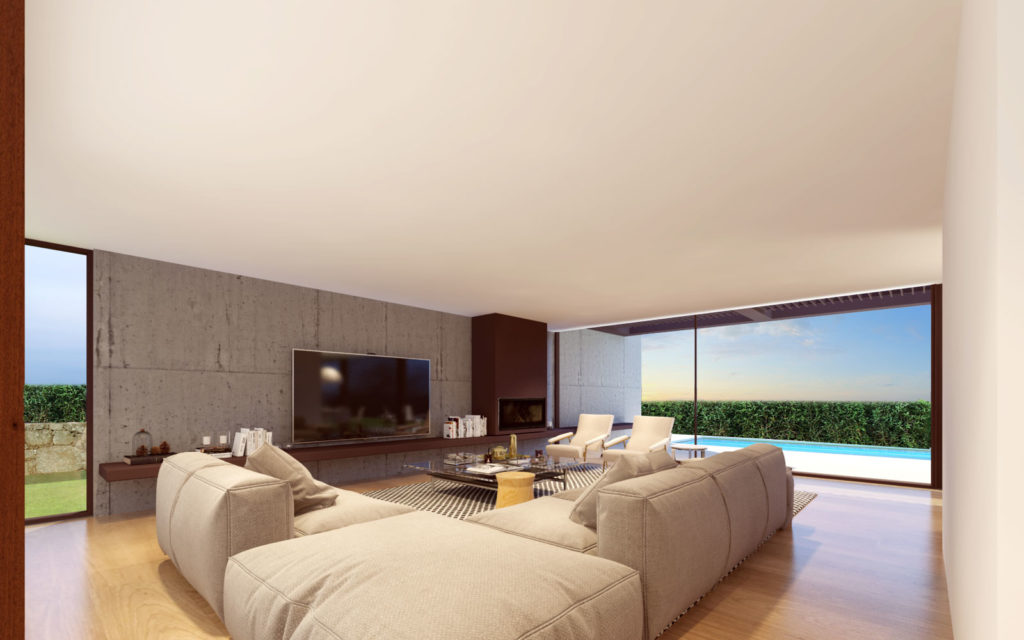Let’s talk about a project that we turned down because we couldn’t help the client. And we’re going to walk you through the steps why and perhaps you’ll see your situation in this room. You’ll see parts of your situation in this room and it can help you guide you towards the right direction and save us all a bunch of time.
So let’s look at this room and you can see that it’s a nice room, very modern, lots of glass, lots of hard surfaces, lots of uneven surfaces. Good dimensions but not so much in terms of acoustical issues. So we have to be careful when we’re selecting a room for music that we subscribe and abide by certain criteria, okay?
Sound quality. Remember, I have preached this constantly in videos to everyone that sound quality is the end result of doing a lot of little things correctly and in the right order, okay? I have probably said that statement a thousand times and I’m going to keep repeating it until we start understanding that that is really important. Because a lot of little things is the key. We have to look at all the little things because sound strikes all surfaces and the end result of sound striking all surfaces means that we get a coloration from those individual surfaces. So the surface areas of the room are very, very critical. And in this photo that we showed you, you see we have a lot of glass, we had of a lot of hard floors. Looks nice but not conducive for acoustics, okay?
Here’s another thing that we have to have. The right side and the left side walls. I don’t care if it’s home theater, two-channel, control, mixing, mastering, it doesn’t matter. We have to be able to manage the sidewall reflections at the listening position. In order to do that our right side wall and our left side wall have to be at specified distances to match the distance to the listening position. It’s the laws of physics, we just can’t change that. We can’t have one side open and one side with a wall. Okay? So anytime you have that situation, please find another room. It’s that serious, okay?
And then the old acronym that we always talk about, VSD: volume, size and dimension. We have to have a certain volume. Think of your room as a glass of water. Think of the energy you’re putting in your room as the glass. Think of the water as the energy. It’s only going to hold so much energy before it starts overflowing. You can’t take a 16-ounce glass and put 24 ounces of fluid in it. Just won’t work. So there’s a balance between volume, size, dimension. We can almost put in there usage. So that would be another variable we can add.
Another situation that you get into is these multiple sources. So you have multiple sources, 4 range usually producing lots of energy. More energy, more water in our glass, probably too much for the size of the glass.
So balance, sound quality is the end result of doing a lot of things and sequence, if your room is like the room we just showed you in the photo, best to find another room for music.
—
This is an unedited transcript from our video series from Acoustic Fields. There will be some errors in grammar and sentence structure that occur during this translation process.
For complete understanding and comprehension, please view the video which is included in this text. For any additional information regarding this topic or others relating to room acoustics, please contact us directly at:
P: 520 – 392 – 9486








